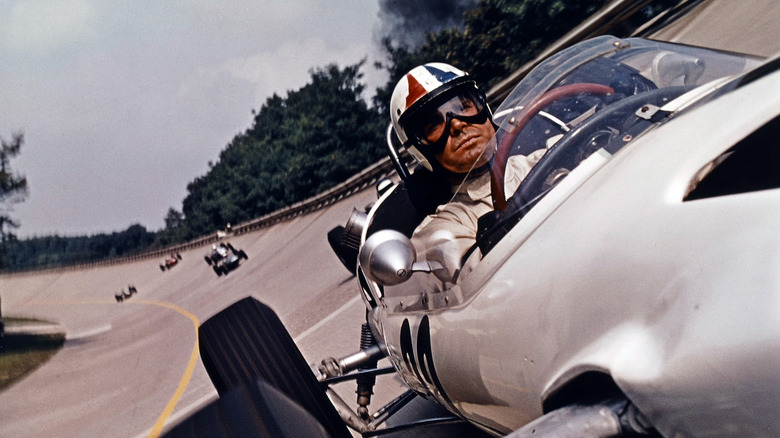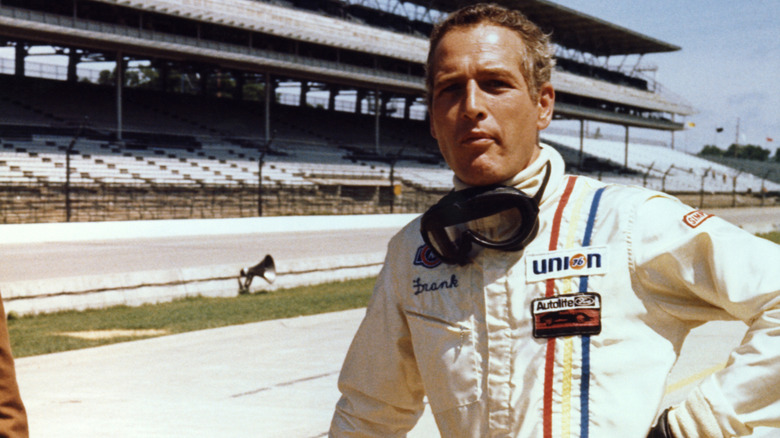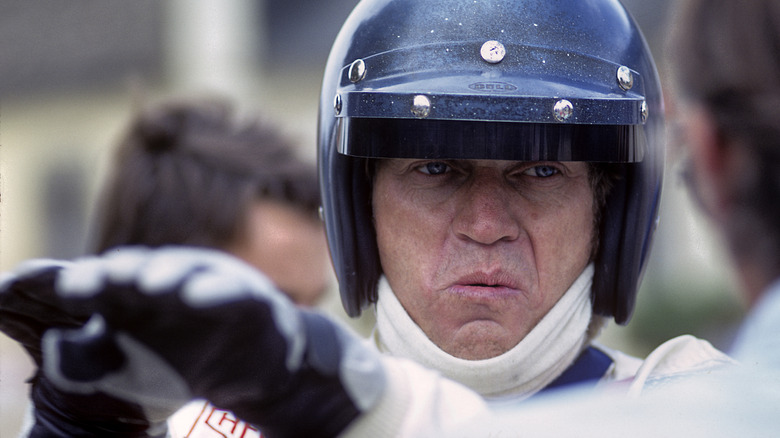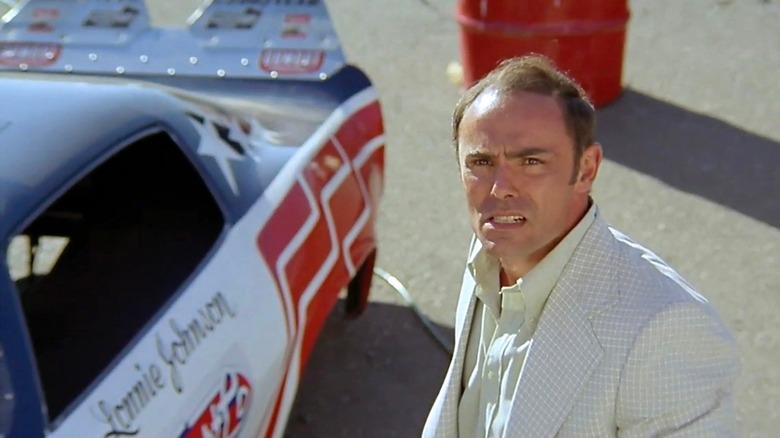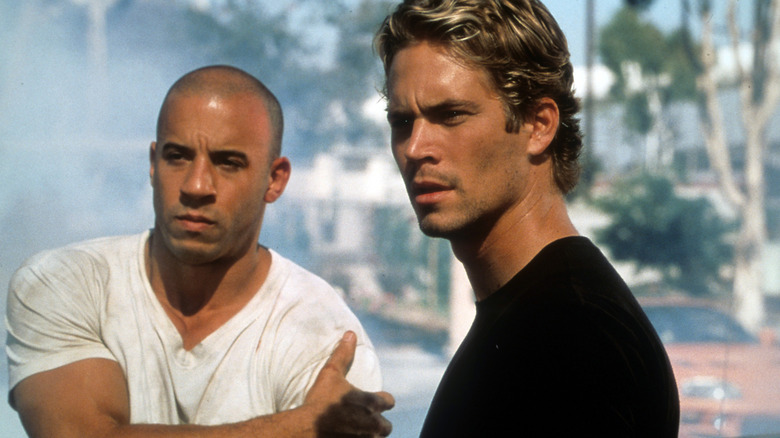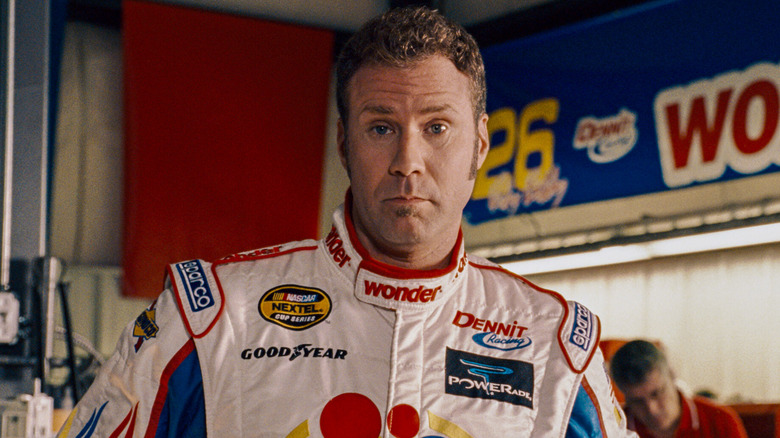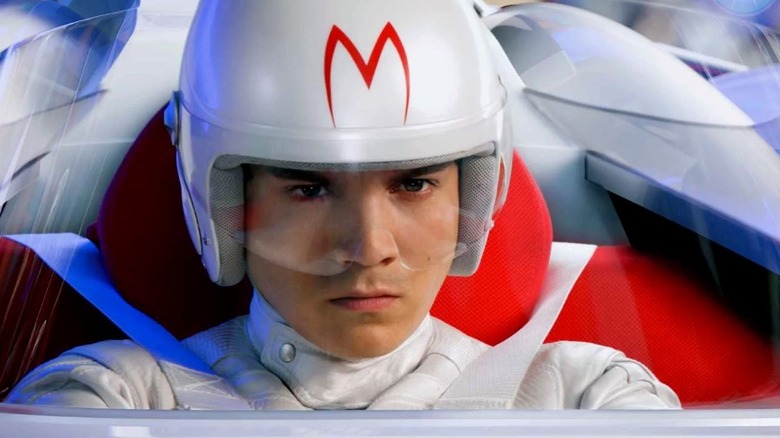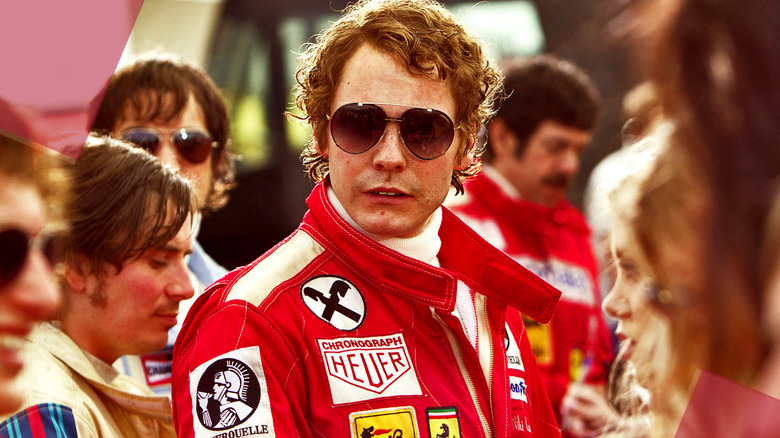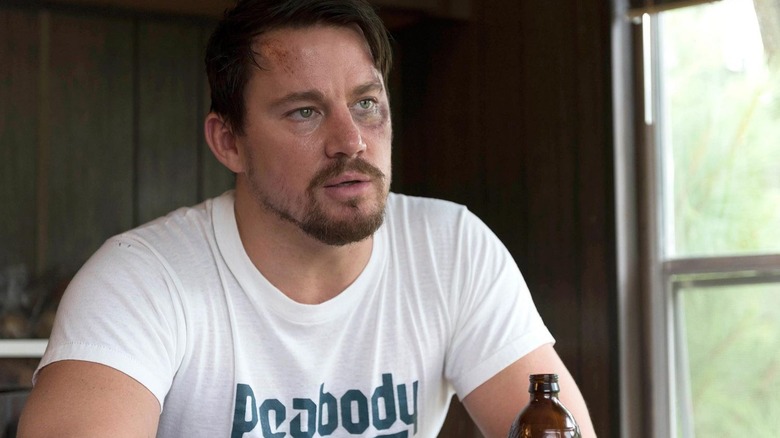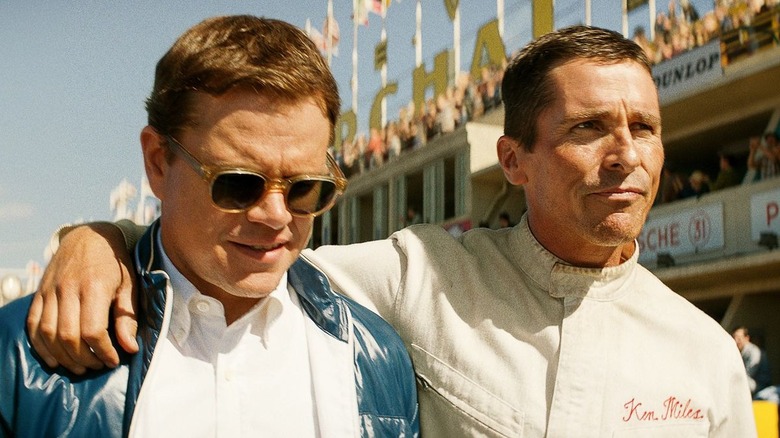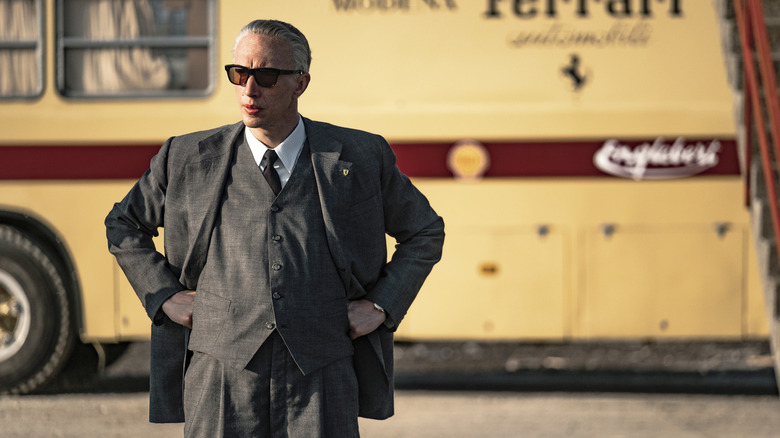Brad Pitt’s latest film, “F1,” opened to rave reviews and big box office returns, becoming the first Apple Studios production to take the top spot in its opening weekend. It was a fitting outcome for a film about a washed-up Formula One driver (Pitt) who races from last place to first when given a chance at redemption by his former teammate (Javier Bardem), who needs to inject some miracle fuel into his failing F1 team.
Director Joseph Kosinski does for race cars what he did for fighter jets in “Top Gun: Maverick,” placing audiences in the driver’s seat and delivering high speed thrills. You’ve never seen a racing movie quite like “F1,” but then again, it’s totally in keeping with the grand tradition of stories about men seeking adventure and risking their lives behind the wheel.
Since the silent era, audiences have been drawn to racing movies, and it’s little wonder why. There’s something inherently cinematic about watching a car race around a track at top speed, as we know that one wrong move could spell disaster. Whether it’s Formula One, the Grand Prix, or NASCAR, few things are as exciting and suspenseful as watching an auto race on film. If “F1” left you with the need for more speed, fear not. Here are the 12 best movies like “F1,” featuring everything from professional sports racing to illegal street driving, and ranging from action-packed blockbusters to absurdist comedies to dazzling sci-fi extravaganzas.
Grand Prix
The “F1” of its time, “Grand Prix” was sold on the promise of some spectacular racing footage, shot in large format 70mm. It stars James Garner as Pete Aron, a renegade racer who gets dropped by his sponsor after causing a crash during a race. Rather than give up, he joins a newfound Japanese team, Yamura Motors, and finds himself going head-to-head with the two-time French champion Jean-Pierre Sarti (Yves Montand), who’s driving for Ferrari. As if he didn’t already have enough going on, Pete also romances Pat Stoddard (Jessica Walter), wife of his former teammate, Scott Stoddard (Brian Bedford).
“Grand Prix” was directed by John Frankenheimer, who gained fame for gritty black-and-white dramas like “The Manchurian Candidate,” “Birdman of Alcatraz,” and “Seconds.” “Grand Prix” showcases his talents as an action master, and foreshadows the famous car chase scenes in his late-career hit “Ronin.” Frankenheimer seamlessly blends real-life racing footage with recreations, creating a verité style that’s aided by cameo appearances from a number of former Formula One camps. The film won three technical Oscars (best film editing, sound, and sound effects) and was one of the 10 highest grossers of 1966.
Winning
In addition to being an actor, director, and philanthropist, Paul Newman was also a professional race car driver, a passion he first discovered when he was preparing for the 1969 movie “Winning.” He plays Frank Capua, a champion driver who marries single mother Elora (played by Newman’s real-life wife, Joanne Woodward). Although Frank loves Elora and her teenage son, Charley (Richard Thomas), his singular devotion to winning the coveted Indianapolis 500 turns him into an absentee husband and father, and he’s shocked to find his wife in bed with a rival driver, Luther Erding (Robert Wagner). Rather than deal with his problems head-on, Frank instead throws himself fully into racing, culminating in a stunning performance at the Indy 500.
Part of “Winning” was shot on location at the Indianapolis Speedway, adding to the verisimilitude that’s already present from the casting of Newman and Woodward. Like many racing films, it views the sport as a means for men to work out their issues on the track instead of through therapy. And like a lot of movies from the late ’60s and ’70s, it ends on a note of ambiguity, offering no easy answers to the problems its characters face.
Le Mans
Like his contemporary Paul Newman, Steve McQueen had an off-screen passion for racing, and often raced cars and motorbikes under the alias Harvey Mushman. His skills behind the wheel found their way into the 1971 film “Le Mans,” in which he plays a racer, Michael Delaney, who’s wracked with guilt over a motor accident that left a competitor dead. Carrying on an affair with the dead driver’s widow, Lisa Belgetti (Elga Andersen), Michael once again finds himself competing in the 24-hour racing tournament, pitting him against his rival, Ferrari champion Erich Stahler (Siegfried Rauch).
“Le Mans” was shot on location during the actual 24 Hours of Le Mans race in 1970, giving it an almost documentary feel. There’s barely any plot to speak off, and what little character scenes there are exist solely as a means of stringing together the racing sequences. Although it was directed by Lee H. Katzin, the real auteur of “Le Mans” was McQueen, who shepherded the project from beginning to end and didn’t give up when original director John Sturges dropped out (his determination to get it made is detailed in the 2015 documentary “Steve McQueen: The Man and Le Mans,” another must-see for racing enthusiasts).
Fast Company
Would you believe that a David Cronenberg movie would make this list? (And no, it isn’t “Crash.”) Released the same year as Cronenberg’s early horror thriller “The Brood,” 1979’s “Fast Company” centers on Lonnie “Lucky Man” Johnson (William Smith), a veteran racer who’s butting heads with his boss, Phil Adamson (John Saxon). Fed up with Lonnie’s unprofessional behavior, Phil replaces him with a rival driver and fires his team. Lonnie gets revenge by stealing the sponsor’s car and driving it at the upcoming race in Edmonton.
“Fast Company” was released before Cronenberg became the king of body horror with “Scanners,” “Videodrome,” and “The Fly.” Although it seems like an outlier, it isn’t that strange when you consider his filmography also encompasses “Dead Ringers,” “A History of Violence,” and “Eastern Promises,” to name a few non-horror titles. It makes even more sense considering that Cronenberg is, as he told The Independent in a 1997 interview timed to the release of “Crash,” “a car enthusiast.” If nothing else, “Fast Company” holds a special place in history as the final film for “Queen of the B Movies” Claudia Jennings, who died that same year in a car accident at age 29.
Days of Thunder
Following the success of “Top Gun,” Tom Cruise reunited with director Tony Scott to put his need for speed behind the wheel of a race car. In 1990’s “Days of Thunder,” he plays Cole Trickle, a brash upstart making a name for himself on the NASCAR circuit. When he and rival driver Rowdy Burns (Michael Rooker) are injured in a crash, Cole recuperates at a Daytona Beach hospital, where he falls in love with his neurosurgeon, Dr. Claire Lewicki (Nicole Kidman). Cole and Rowdy set their differences aside to defeat disreputable hotshot Russ Wheeler (Cary Elwes) at the Daytona 500, with Cole driving Rowdy’s car.
“Days of Thunder” tried to do for NASCAR drivers what “Top Gun” did for fighter jet pilots, which, funnily enough, makes it a spiritual cousin to “F1,” which was directed by “Top Gun: Maverick” helmer Joseph Kosinski. As usual with Tony Scott, it’s muscular action entertainment, filled with thrilling racing sequences and stomach-churning car crashes. If nothing else, “Days of Thunder” will retain its place in pop culture history as the film where Cruise and Kidman met and fell in love, with their marriage lasting until the pair divorced in 2001.
The Fast and the Furious
Considering how the franchise has transformed throughout the last two decades, it’s almost startling to rewatch “The Fast and the Furious” and see that it’s just about illegal street racing. Paul Walker plays Brian O’Conner, an undercover LAPD officer who infiltrates the city’s underground street racing scene, led by hotshot Dominic Toretto (Vin Diesel) and his girlfriend, Letty Ortiz (Michelle Rodriguez). Brian becomes a friend to Dom — and even more to Dom’s sister, Mia (Jordana Brewster) — which puts his investigation into recent hijackings in peril.
Although the sequels morphed into stories about a ragtag group of international crime fighters, the 2001 original is first and foremost a drag race movie. Taking its inspiration from exploitation classics out of Hollywood’s grindhouse days, the heart of the film is in its street racing scenes, which carry a feeling of high stakes danger. At the same time, there are the roots of what would become the franchise’s core theme, which is that family is about more than just blood. Considering that Walker would die in a car crash in 2013 (leaving his work on 2015’s “Furious 7” incomplete), it’s touching to see him and Diesel forming what would become a franchise-long bond.
Talladega Nights: The Ballad of Ricky Bobby
Long before he was a fixture at the Oscars, Adam McKay was the premiere director of absurdist comedies, and Will Ferrell was his Robert De Niro. The two followed up “Anchorman” in 2006 with another farcical study of male bravado, “Talladega Nights: The Ballad of Ricky Bobby,” transplanting Ferrell from the world of nightly news to NASCAR. Racing legend Ricky Bobby (Ferrell) is on top of the world until French Formula One driver Jean Girard (Sacha Baron Cohen) shows up and starts stealing some of his thunder. But Bobby isn’t one to give up without a fight, and before long he’s giving Girard a run for his money.
Among the many fans of “Talladega Nights” is Christopher Nolan, who once referred to it as a great “remote drop” film (via Variety). And indeed, anyone who tells you they’ll skip past this comedy masterpiece while channel surfing is probably lying to you. As Nolan would likely concur, what makes “Talladega Nights” so rewatchable is that no matter what point you might stumble upon it, there’s an endless amount of great gags to look forward to, not to mention some pretty impressive racing scenes.
Speed Racer
Having wrapped up their original “Matrix” trilogy, the Wackowskis set their sights on an ambitious live-action adaptation of the popular anime series “Speed Racer.” Emile Hirsch is Speed, a champion driver whose Mom and Pops (Susan Sarandon and John Goodman) run Racer Motors. Following the death of his brother, Rex, Speed ascends to the top of the racing charts and is courted by Royalton Industries CEO E.P. Arnold Royalton (Roger Allam) with an offer of unlimited riches in exchange for a matchup. Speed turns Royalton down, and when he learns their CEO has been fixing races in his favor, he hops behind the wheel of Rex’s Mach 5 to win the deadly Casa Cristo 5000.
Released in 2008, “Speed Racer” failed to recoup its massive budget and the stench of failure stuck to it like motor grease on a gasket. Yet just because a movie didn’t make a lot of money doesn’t make it bad, and indeed, “Speed Racer” has often been cited as a box office bomb that’s actually worth watching. As usual with the Wachowskis, it’s visually dazzling, a cartoon brought to vibrant life with the best special effects money can buy.
Rush
Most racing films involve an intense rivalry between drivers, but rarely has that been the focal point, as it is in 2013’s “Rush.” Directed by Ron Howard, it recounts the true story of Formula One drivers James Hunt (Chris Hemsworth) and Niki Lauda (Daniel Brühl), who trade blows both on and off the track. The two are opposites in every way — James is brash and reckless, Niki calculated and reserved. Their intense competitiveness results in a fiery crash that lands Lauda in the hospital with third-degree burns. Yet that doesn’t stop him from getting back behind the wheel, and eventually, something resembling grudging respect grows between him and Hunt.
Although he’s known for having an invisible hand behind the camera, Howard is at his most experimental with “Rush,” adopting a visceral, kaleidoscopic style for the racing sequences. The script by Peter Morgan (who also wrote Howard’s “Frost/Nixon”) delves deep into the psychology of men who put their lives at risk for the sake of a trophy. Although Lauda finds Hunt’s hedonistic lifestyle to be self-destructive, he isn’t really one to talk, considering he jumps back into a race car after nearly losing his life in one. Is it a trophy that drives such behavior, or something deeper?
Logan Lucky
Considering how prolific he’s become in recent years, it’s funny to remember there was a time when Steven Soderbergh had “retired” from filmmaking. “Logan Lucky” was his return to features after a brief hiatus, and whatever he did during his siesta certainly recharged his batteries.
When construction worker Jimmy Logan (Channing Tatum) is fired from his job at Charlotte Motor Speedway, he enlists his brother, Clyde (Adam Driver) — who lost an arm while serving in Iraq — and their sister, Mellie (Riley Keough), to help him rob the Speedway during a race. To pull this off, they hire safecracker Joe Bang (Daniel Craig) to set off an explosion, which is easier said than done considering he’s currently behind bars.
“Logan Lucky” shares a lot of DNA with movies like “Smokey and the Bandit” and “The Cannonball Run” (basically anything Burt Reynolds made at the height of his stardom). Whereas those films were little more than down-home entertainment, Soderbergh adds a twist of socio-political commentary to the antics, as the Logan siblings have been left little choice by society but to steal. That’s not to say the film is preachy; rather, it couches these themes in action and farce.
Ford v Ferrari
Sure, racing rivalries are great, but what about racing friendships? Such is the subject of 2019’s “Ford v Ferrari,” a biographical sports drama about a bond that forms between two men over their shared disdain for a competitor. The men in question are retired American racer Carroll Shelby (Matt Damon) and expert British driver Ken Miles (Christian Bale), who are recruited by Henry Ford II (Tracy Letts) to build a vehicle that can compete at the 24 Hours of Le Mans against reigning champion Ferrari. Although Carroll and Ken frequently butt heads, they manage to construct a Ford worthy of a trophy.
Directed by James Mangold, “Ford v Ferrari” is a throwback to the old-fashioned racing dramas of yore, with an emphasis on classic nuts-and-bolts storytelling. At the same time, there’s a level of sophistication and nuance to the film that sets it apart from similarly muscular entertainments. It all culminates in the dazzling Le Mans tournament, which meticulously recreates the 24-hour marathon that will decide the fates of Shelby and Miles. “Ford v Ferrari” earned four Oscar nominations, including best picture, and won prizes for best film editing and sound editing.
Ferrari
Whereas most racing movies examine the psychology of the person behind the wheel, 2023’s “Ferrari” centers on a man who might have given up driving long ago, but could never leave the race track behind. Adam Driver is Enzo Ferrari, who in 1957 is facing multiple crises both professional and personal. His car company is in danger of bankruptcy, he’s preparing his drivers for the 1,000-mile Mille Miglia race, and he’s juggling his wife, Laura (Penélope Cruz), and mistress, Lina Lardi (Shailene Woodley), with whom he has a secret child.
“Ferrari” was a longtime passion project for director Michael Mann, who has specialized in films about obsessive men who bury their emotions in their work. It’s understandable why he’d be drawn to Enzo Ferrari as a subject, considering his singular devotion to racing distracts him from the pain of losing one son and the failure to acknowledge another. In Mann’s world, masculinity is a curse, and men are drawn to dangerous professions as a means of masking their sensitivity. As seen in one jaw-dropping crash during the Mille Miglia tournament, race car drivers are modern day gladiators, using cars instead of chariots.


